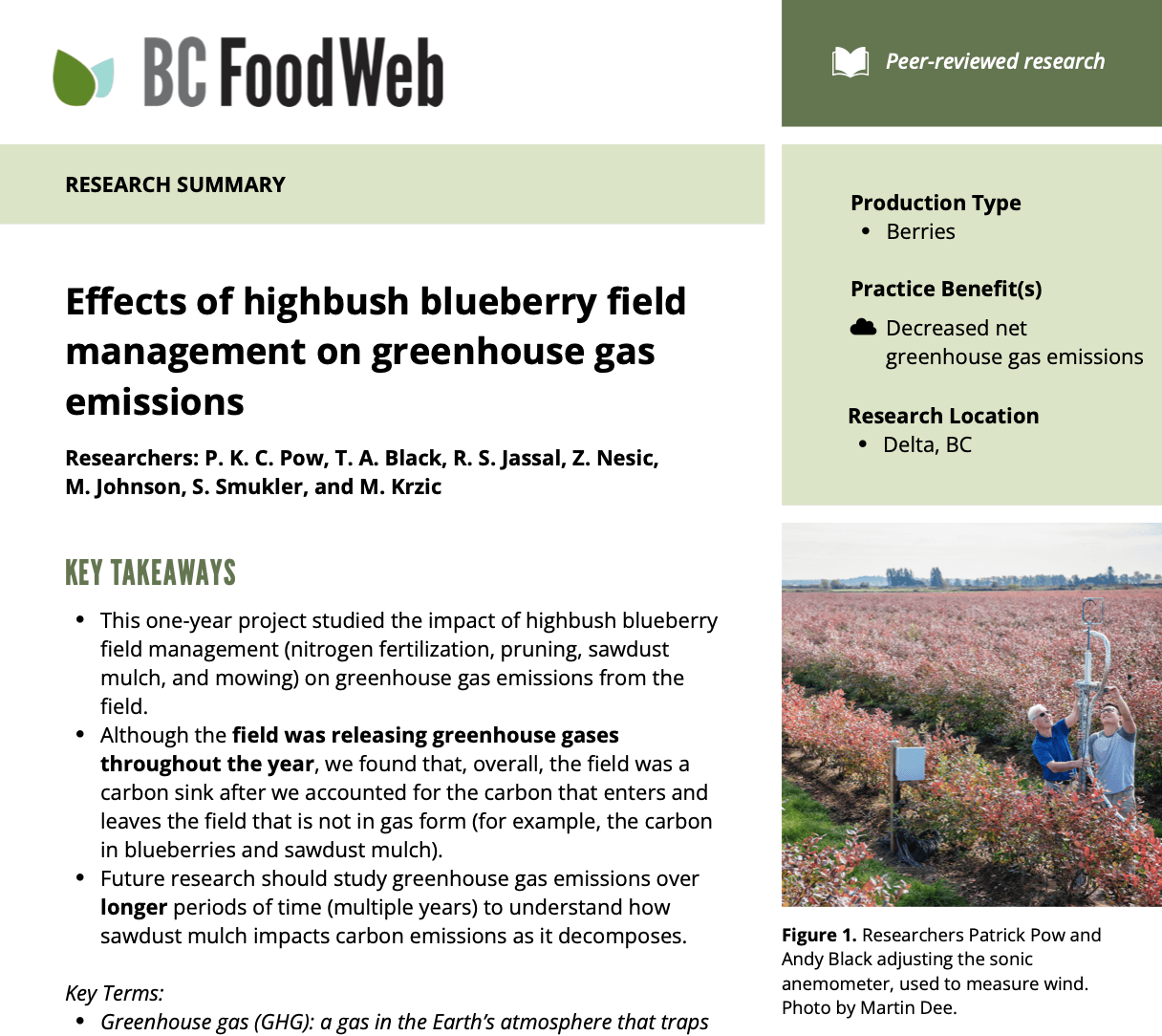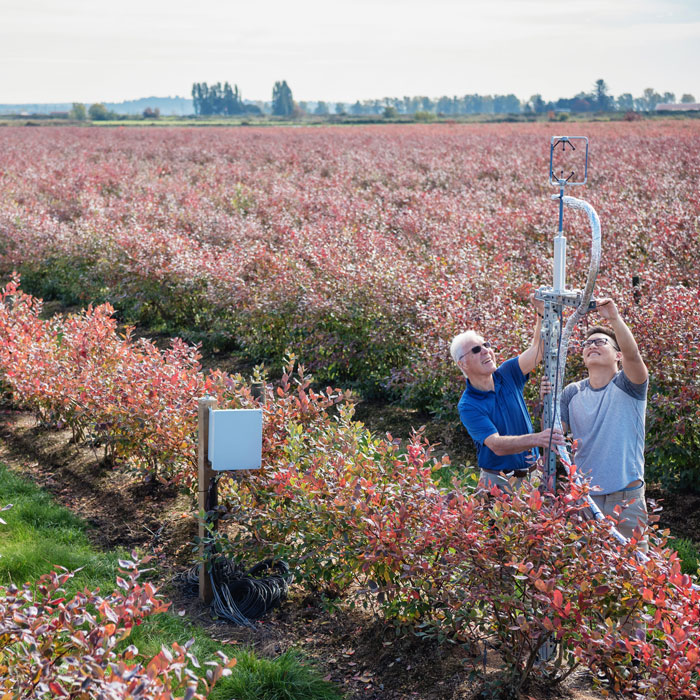Effects of highbush blueberry field management on greenhouse gas emissions
Introduction
Our objectives were to:
- Measure annual GHG emissions and how they vary by season.
- Understand the impacts of day-to-day farm management practices (nitrogen fertilization, pruning, and interrow grass mowing) on GHG emissions from the field.
- Understand how carbon that is not in gas form (carbon in blueberries and sawdust mulch) impact the overall GHG emissions from the field.
About this Brief
This brief was prepared by Juliana Cao from the BC Food Web team with the help of Patrick Pow and is based on the following scientific journal article:
Pow, P. K. C., Black, T. A., Jassal, R. S., Nesic, Z., Johnson, M., Smukler, S., & Krzic, M. (2020). Greenhouse gas exchange over a conventionally managed highbush blueberry field in the Lower Fraser Valley in British Columbia, Canada. Agricultural and Forest Meteorology, 295. https://doi.org/10.1016/j.agrformet.2020.108152
Key Findings
- This one-year project studied the impact of highbush blueberry field management (nitrogen fertilization, pruning, sawdust mulch, and mowing) on greenhouse gas emissions from the field.
- Although the field was releasing greenhouse gases throughout the year, we found that, overall, the field was a carbon sink after we accounted for the carbon that enters and leaves the field that is not in gas form (for example, the carbon in blueberries and sawdust mulch).
- Future research should study greenhouse gas emissions over longer periods of time (multiple years) to understand how sawdust mulch impacts carbon emissions as it decomposes.



